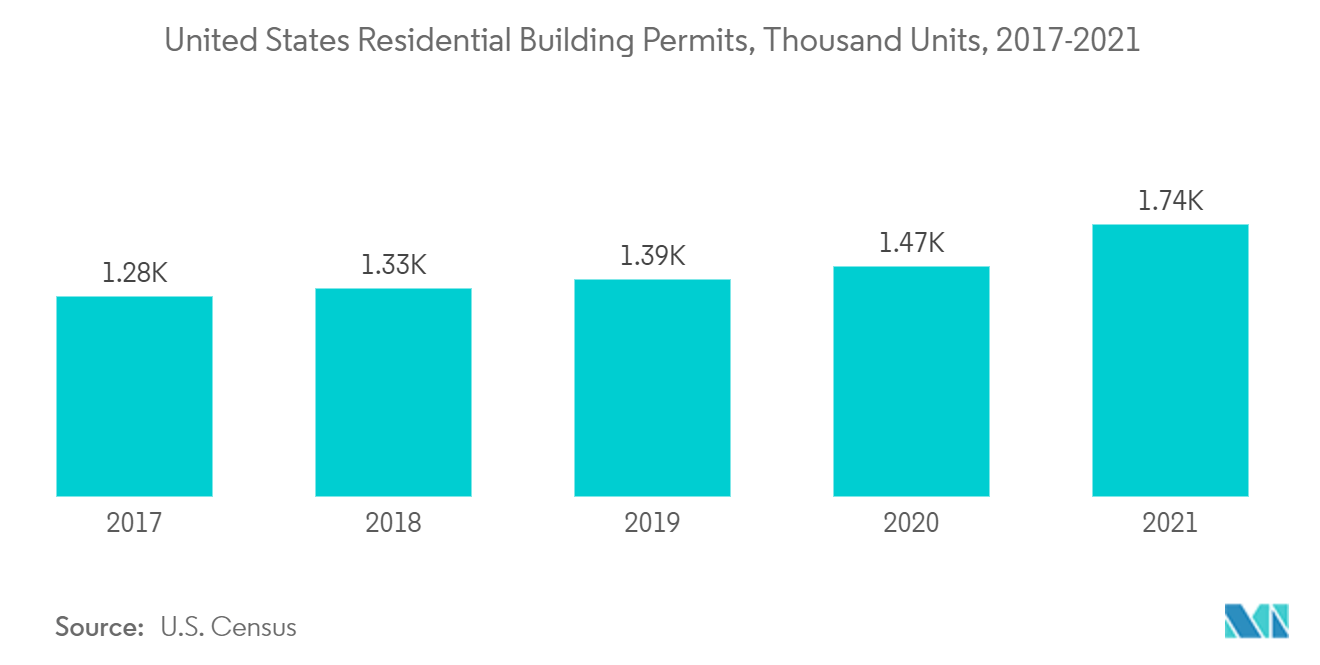Market Trends of Wood Fiber Insulation Industry
This section covers the major market trends shaping the Wood Fiber Insulation Market according to our research experts:
Residential Sector Demand Continues to Rise
- Wood fiber insulation in residential spaces helps to minimize energy expenses by providing an insulation layer that maintains a more stable temperature inside the home. This insulation reduces energy bills by reducing the energy required to heat and cool the home.
- Furthermore, wood fiber insulation is a natural, environmentally beneficial substance that can help to lessen a home's environmental effects. Wood fiber insulation can be utilized in walls, attics, floors, and ceilings in the residential sector to enhance energy efficiency and save heating and cooling costs.
- In the US, spending on new construction exceeds $1 trillion annually. US census data shows 1,737,000 new residential housing permits were issued in 2021, rising more than 18% from 2020.
- Wood fiber insulation is becoming increasingly popular in the Asia-Pacific residential construction sector due to its outstanding thermal efficiency, low cost, and environmental friendliness. The usage of wood fiber insulation is fast increasing in China. According to a report by the China National Forest Products Industry Association, this expansion was fueled by rising demand from the construction industry and the government's efforts to promote energy efficiency and environmental protection. The Chinese government developed several regulations to encourage the use of wood fiber insulation, such as offering subsidies for its purchase and installation.
- Overall, the growing residential construction market is expected to drive the wood fiber insulation market through the forecast period.

Europe to Dominate the Market
- The European Committee for Standardization establishes European standards for wood fiber insulation (CEN). The EN 13171 standard addresses the specifications for thermal insulation products made of wood-based materials and is the most often used one. According to Eurostat, European residential building permits reached 1.97 million, up 15% over the previous year.
- Europe's largest construction market is in Germany. The country's construction industry is expanding slowly due to increased residential construction operations. According to data from the Federal Statistical Office, building completion work turnover increased by 9.1% in the third quarter of 2021 compared to the third quarter of the previous year in December 2021. (Destatis).
- The German government initiated the construction of the Digital Park Fechenheim on a 10.7 ha area, with a gross floor area of 100,000 sq m in Frankfurt-Fechenheim, Hesse, Germany, with an investment of USD 1,179 million. The construction work started in Q3 2021 and is expected to get completed in Q4 2028.
- In Europe, wood fiber insulation is a popular alternative to acoustic insulation. It is constructed of wood fibers glued together with a binder like starch or polyurethane. The wood fibers absorb sound waves, lowering noise levels and making living spaces more comfortable.
- All the factors mentioned above, in turn, are boosting the demand in the wood fiber insulation market in the region.


